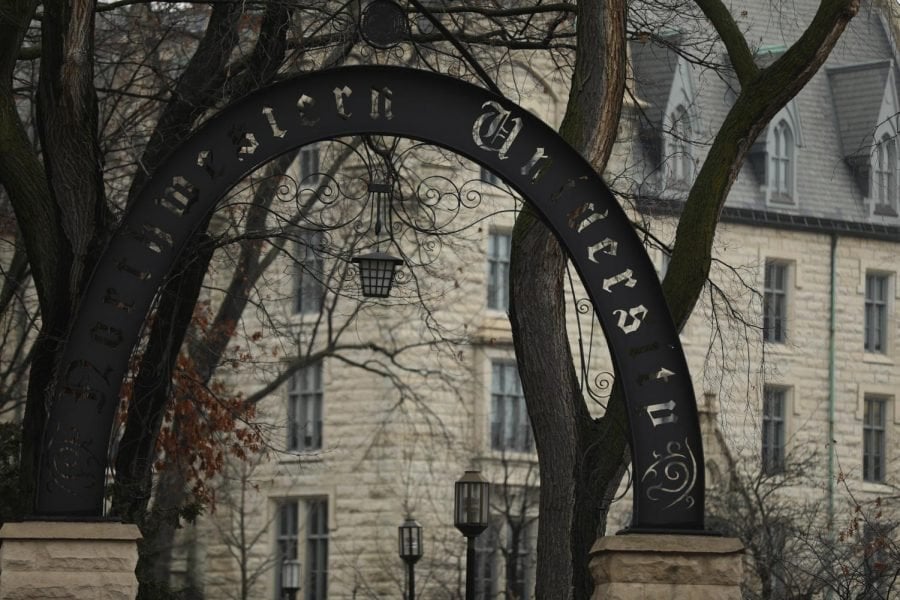A guide to social distancing on campus
File photo Chris Walker/Chicago Tribune/TNS
Northwestern University Weber Arch. The recommended social distancing guideline — stay six feet apart — equates roughly to one quarter the height of the arch.
July 9, 2020
By now, many students have heard the U.S. Centers for Disease Control and Prevention recommendation: Stay six feet apart.
But until it’s socially acceptable to carry around a measuring tape, it will be difficult to know how close is too close. For reference, the rock is about six-foot-four, and six feet is about one quarter the height of the Weber Arch.
Despite its ubiquity, six feet is a somewhat debated measure of safety. The World Health Organization recommends just three feet of distance, according to a web page last updated June 4. Other experts say six feet isn’t far enough.
Northwestern’s return to campus policy says that “in all shared spaces, the University will establish protocols and reminders to keep at least six feet of space between individuals.”
To aid in this effort, Facilities and the Office of Global Marketing and Communications created signs with social distancing guidelines for different common spaces around campus. The signs designate stairwells for going either up or down, remind students to prop open restroom doors and permit only one passenger in an elevator at a time.
Yet in a June email to students, the University said they could not guarantee “a virus-free environment,” even with precautions like these in place.
McCormick and Feinberg Prof. Jaline Gerardin is part of a COVID-19 modeling task force that is working with the Illinois Department of Public Health. She recommends students who come back to campus act like they’re “sheltering in place.”
Dorms are not small enough to be considered one family unit, so students will be asked to social distance in common areas even if they live in the same building, Residential Services said in an email.
Weather permitting, Gerardin said spending time outside may be safest. While crowds should be avoided, health experts say people are significantly less likely to get the coronavirus while outside due to better airflow.
Wearing masks also significantly reduces the risk of transmission, though Gerardin cautions against getting too close to people even with a protective face covering.
“If you’re wearing a mask, then the risky radius is probably not quite that far,” Gerardin said. “But on the other hand, safety first, so we should try to maintain that distance whenever we can — even if we’re wearing masks.”
Shared restrooms may also pose a challenge to limiting the spread of the virus. Studies show aerosolized droplets from flushing toilets can linger and lead to airborne transmission.
Dining hall food is relatively safe as long as no one is sneezing in your food, Gerardin said. The main known risk of contracting COVID-19 comes from breathing in air droplets — not from ingesting the virus or touching infected surfaces.
Gerardin’s biggest piece of advice? If you don’t have to come back to campus, don’t.
“It’s all safety first,” Gerardin said. “Do you really want to put yourself in a risky situation if you don’t have to?”
Email: [email protected]
Twitter: @hannah_feuer
Related Stories:
— University to implement single-person on-campus housing; Wildcat Welcome to be “reimagined”












